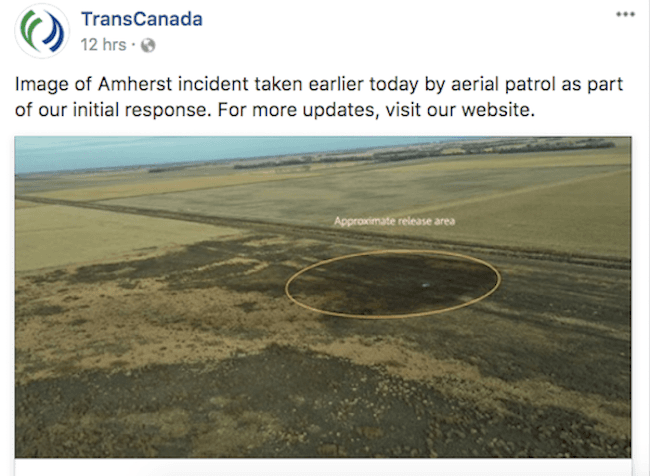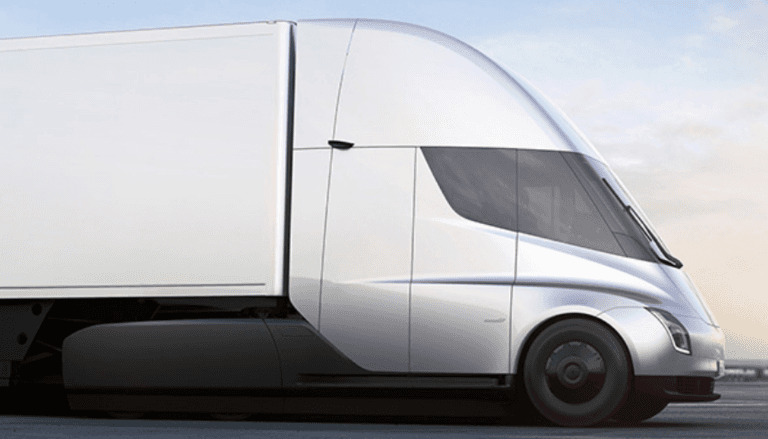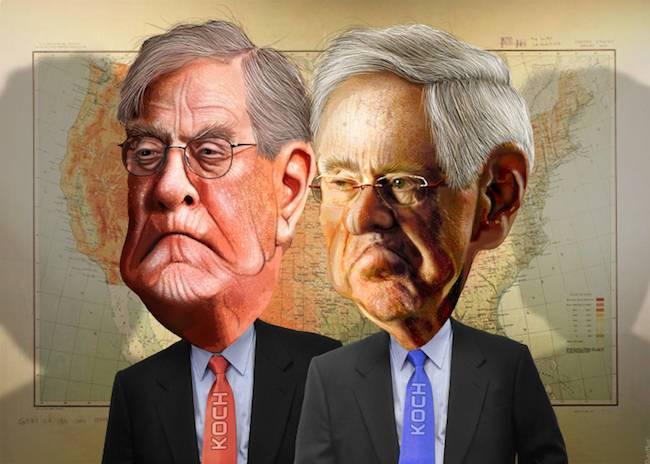Keystone XL Approval Brings High Risk, Few Jobs to Nebraska


As many expected, last week's Keystone oil spill in South Dakota did not convince state regulators in nearby Nebraska to stop the Keystone XL leg of the pipeline. On Monday, the Nebraska Public Service Commission gave the thumbs-up for construction of the controversial project. Developed by TransCanada, Keystone XL will bring tar sands oil from Canada down to the Nebraska-Kansas border. Existing pipelines will then convey the oil to the Cushing oil and gas hub in Oklahoma, and on down to Gulf Coast refineries.
If you caught that thing about Gulf coast refineries, you're on to something. The oil will not be processed or distributed within states along its route. According to one official estimate, Keystone XL will bring a total of just 39 permanent jobs to the four states (Montana, South Dakota, Kansas and Nebraska) through which it passes. Even if Nebraska somehow gets all 39 jobs, that's a high price to pay for a proven risk.
A short history of leaks on the Keystone Pipeline
Last week's Keystone pipeline leak in South Dakota enabled an estimated 210,000 gallons of oil to seep into the ground, and it is not the first time that state has weathered such an episode.
In April 2016 pipeline owner TransCanada reported a leak of 187 gallons on Keystone in South Dakota, a figure that was eventually revised up to almost 17,000 gallons.
According to Inside Climate News, the 2016 leak was one of "dozens" recorded since the pipeline was commissioned in 2010. In its first year alone, there were 35 leaks along its route in Canada and the US.
Somewhat ominously, the April 2016 leak was not caught by the pipeline's leak detection system. It went unchecked until a passer-by noticed something amiss. The leak detection experts cited by Inside Climate News indicate that even with advanced detection technology, some leaks are too small to set off alarms, and in remote areas a small leak could add up to big numbers.
Nationally, the nation's network of oil and gas pipelines experienced 5,682 "serious" episodes from 1997 to 2016. In past years the numbers often dipped below 300 per year, but since 2013 the annual number of episodes has ranged from 301 to 330.
South Dakota is not pleased
The Nebraska Public Service Commission was not rattled by the latest leak, but South Dakota regulators sure were.
On Tuesday, Reuters reported that the South Dakota Public Service Commission is concerned because the spill is already the third to hit the state since 2010. The Keystone pipeline has an anticipated lifespan of up to 100 years, and the episodes could become even more frequent as it ages.
According to Reuters, South Dakota could suspend or even cancel the pipeline's permit if a forensic analysis reveals that TransCanada violated its conditions.
Don't hold your breath for the results of the analysis. If preliminary findings are not definitive a more comprehensive study will be in order, and that could take months.
Meanwhile, over in Nebraska
Interestingly, Nebraska regulators may have had an eye on the South Dakota spill after all. Although they approved the Keystone XL pipeline on Monday as expected, they did not approve the preferred route that TransCanada had mapped out.
Here's the nut of the problem, as described by the Lincoln Journal Star:
[The alternate route] would impact about 40 new landowners, many of them in Madison and Seward counties, who aren't along the preferred route and don't have the original Keystone pipe cutting through their land already.
In other words, TransCanda could be bogged down in court for years while property issues are hashed out, among other legal issues that are sure to arise along the new route.
Meanwhile, the oil clock is ticking. Every nation on Earth is beginning to take definitive steps to wean their economies away from fossil fuels. That includes the US, which is tapping into its massive wind energy resources even though the Trump administration has pulled the nation out of the Paris Agreement on climate change.
If the Keystone XL pipeline makes economic sense for TransCanada today, that won't be the case for much longer.
Pipeline good, wind better -- much better
Do read the full Journal Star article for many more details (here's that link again). It provides a simple explanation why regulators ignored the South Dakota leak: a 2011 state law prohibits the Nebraska Public Service Commission from considering such risks.
As for the benefits, the Journal Star provides this citation:
"...we also are very cognizant of the benefits to Nebraska, especially to the counties along the route. With economic concerns abounding, tax revenues from a project such as this can help ease burdened landowners, counties, school districts, and subdivisions by raising the potential of future property tax relief via expansion of the local tax base."
That's all well and good, but a newly approved wind power project in Nebraska demonstrates how limited those pipeline benefits are, compared to renewable energy projects.
The new Rattlesnake Creek wind farm will involve payouts to local property owners in addition to pouring new tax revenues into local coffers.
The new wind farm will also offer about 16 permanent jobs after construction, which is probably more than the state will get from Keystone XL.
The real kicker is the new businesses that will stake out ground in Nebraska on account of access to clean power.
Facebook has already pledged to soak up the lion's share of electricity from the new wind farm, which will go to power a new data center.
Facebook is currently in the process of hiring its first wave of 18 permanent staff at the new data center, and it anticipates a total of 100 permanent positions once the facility is fully operational.
WRI Announces $2 Billion Commitment to Restoring Degraded Forests


The World Resources Institute(WRI) will be overseeing the funding of a bold new plan to restore degraded lands in Latin America and the Caribbean. The project, which has already has more than $2 billion in private investment funding, is the latest effort to address what researchers say is a looming environmental crisis in the making: not enough forestland to counteract carbon emissions in the atmosphere.
According to WRI, nearly half of all of the greenhouse gas emissions (GHG) from Latin America come from agricultural and forestry land use, urban development and other kinds of land use change. More than 12 countries have now committed to plans to restore these degraded areas as part of meeting their their Nationally Determined Contributions under the Paris Agreement.
WRI says that's good news not just for the environment but for communities that rely on those lands. About 742 million acres of forestland throughout the region are considered degraded. Another 860 million acres are classified as deforested. Restoring the biodiversity of these lands is critical to ensuring enough water and potential for sustainable land use.
"With the region expected to play an increasingly important role in global food security, this pressure will continue to ratchet up," says WRI. By restoring lands that have been degraded and denuded, says the organization, water sources and valuable watersheds that feed the biodiversity of areas can be reinstated and protected.
Panama has already found that biodiversity restoration works. The watershed bordering what was to become the 48-mile Panama Canal was first cleared in the 1800s by U.S. engineers and underwent systematic clearing until the 1980s when the canal was was assumed the property of Panama. In time scientists realized that the process wasn't just destroying the natural habitat, it was affecting the replenishment of the water to the canal that was vital for marine traffic. It took another three decades, however, before Panama formally initiated reforestation of the affected lands. Today that "green infrastructure" that is so vital to the canal's operation also helps generate electricity for the country.
The investments will be managed through WRI's 20X20 program, which has already successfully initiated restoration of more than 24 million acres, amounting to some 40 different projects across the region.
Other organizations that help guide sustainable practices in farming, ranching and educational tourism are assisting as well. The Novo Campo program in Brazil has been teaching cattle ranchers how to manage their resources sustainably. In Nicaragua, coffee growers are learning the benefit of using newly restored forests to help shelter their crops from the hot sun. The return of Nicaragua's biodiversity also supports a growing ecotourism trade, which WRI points out, adds value to the land and opportunities for communities to benefit through industries that sustain its worth.
And there may be another benefactor to the WRI's successful launch of the 20X20 program: tree planters. Time will tell whether the attempt to reforest and restore millions of acres across the two hemispheres will spawn new industries, new research and new knowledge dedicated to restoring and protecting the earth's delicate ecology.
Flickr image: mauroguanandi
Cool Effect Rolls Out Its Holiday Gift Packs


With Thanksgiving, Christmas and Hanukkah just around the corner, crowdfunding platform Cool Effect is rolling out a new set of holiday gift packs for the eco-conscious consumer. The six innovative concepts aren't just designed to make gift-buyers feel good about their choices, though. They send that all-important message to recipients that Mother Earth should be on all of their gift lists as well. Oh, and it doesn’t hurt that all gifts purchased with Cool Effect are tax-deductible!
Communicating the need for eco-friendly concepts to family and friends can be a difficult at times, so Cool Effect has come up with a way to help. The projects not only help reduce carbon emissions, but give developing communities the step up that's often needed to become sustainable. And, they educate consumers about how they can really help reduce greenhouse gas emissions.
Happy holidays, happy health
Cool Effect's cookstove initiatives are popular because they get right to the heart of one of the worst causes of greenhouse gas production and incidental death in remote, impoverished communities: unsafe cooking stoves that rely on high amounts of wood or coal fuel. The newer, low-fuel stoves that Cool Effect promotes not only help slow carbon emissions, but indirectly help slow deforestation of local forests and protect endangered species at the same time. And studies have shown that better cookstoves translate to lower childhood mortality and illness from toxic fumes, so communities benefit as a whole"Our cookstove projects have been grouped into one handy gift packet for the planet," writes Cool Effect, which explains that these cookstoves are tailor-made to meet the needs of a specific community.
The holiday gift pack covers all four of Cool Effect's cookstove projects, and individuals can choose to gift the standard $25 or $100 packages, or any amount they choose.
Level 1: One Heart $25
Level 2: Two Hearts $100
Clean air pack: The Cuckoo Combo
Got a bird enthusiast in mind for this holiday season? Cool Effect has designed a package that will appeal to both nature lovers and environmentalists in general.
"This gift pack is an ode to the Yellow Billed Cuckoo, a threatened bird known for filling the air with cuckoo sounds, just like the clock, before thunderstorms and late summer showers," explains Cool Effect.
Of course supporting efforts to reduce methane and nitrous oxide emissions doesn't just help the birds. It improves the ecology that dozens of other threatened and endangered species rely on as well. This duo of greenhouse gas-fighting projects helps communities do the right thing by redirecting and processing the gases from fertilizer and natural emissions so their emissions don't harm the environment.
Level 1: One Cuckoo $25
Level 2: An Asylum of Cuckoos* $100
(*Yes, that's the actual term for a group of cuckoos!)
Coffee: Cool Effect's brew-tiful gift
Who doesn't love coffee? And who wouldn't want to keep Peru's spectacular Alto Mayo Protection Forest pristine? This combo not only helps reduce deforestation by providing mechanisms for Peruvian to grow coffee and protect the forest, but also helps ensure that individuals in rural Honduras have safe, affordable and healthy ways to cook. The common thread in these two projects is their ability to help remote communities become sustainable and support the needs of the local environment."By supporting these projects, your gift will help reduce Earth-warming emissions by reducing the number of trees cut for firewood in important coffee growing areas of the world," says Cool Effect, which points out that there's always a connection between local environmental conditions and our own ability to buy the products we love (like coffee) off the shelf. "Whether it is a coffee farmer’s cookstove or a coffee growing forest, all contribute to your morning brew."
Level 1: Give One Coffee Bean: $25
Level 2: Give Bunch of Coffee Beans: $100
Clean energy gift pack
OK, we admit it: The idea of poo as a gift may seem a bit strange to your friends -- that is, until they realize the benefits of their new gift. This little package helps a community in India build biogas digesters that will provide energy for cooking and running their homes. And just as importantly, it keeps the methane from decaying animal waste and other bi-products from entering the atmosphere."Just one biogas digester can capture enough methane (CH4) to power several homes at a time, saving families money and reducing the amount of greenhouse gases released into the environment."
Level 1: One Poo $25
Level 2: A Ton: $100
Wind energy gift pack
Wind turbines have been around for centuries, but one of today's greatest accomplishments is finding ways to transport that technology to very remote, underserved communities that can use it. This little gem of a package provides support for 10,000 low-income families in Costa Rica's mountainous region, where the costs of building turbines are high but the technology is greatly needed. The clean energy also helps supporting businesses like tourism and farming remain sustainable."Just one wind turbine can power multiple homes, businesses and schools all while providing good jobs in manufacturing, installation and maintenance to hard-working Costa Ricans," says Cool Effect.
Level 1: Wind $25
Level 2: Power $100
Save the Snowman gift pack
Can't make up your mind which would be the perfect gift? Cool Effect rolls all of its popular projects into its Snowman Gift Pack so you can showcase all of the ingenious ways that climate change is now being fought."Cool Effect has projects across the globe that verifiably reduce carbon pollution to fight climate change, and this gift package allows you to support every single one of them. But it doesn’t stop there. Whether it’s preventing carbon dioxide (CO2), methane (CH4), or nitrous oxide (N2O), these projects fight earth-warming emissions of all kinds to help our frosty friends and keep winter a wonderland."
Level 1: Snowball $25
Level 2: Snowstorm $100
Walgreens Boots Alliance Aligns Its Strategies, Practices, Targets With SDGs


By Tom Idle
Since the beginning of the year, the world’s businesses and governments have been rallying to meet the United Nations Sustainable Development Goals (SDGs), also known as the Global Goals.
Launched to great fanfare as a set of 17 global ambitions, the Goals offer the world a useful ‘to do’ list for the planet. Fix everything on the list by 2030, and all will be okay in the world. At least, that’s the theory.
In reality, the challenge is much more tough and complex. To end global poverty (SDG No.1), for example, will mean reducing to zero the number of people living on less than $1.25 a day. According to the World Bank, that number is currently 1.2 billion people, or 16% of the world’s total population.
But the Goals are hugely important, particularly for a company like Walgreens Boots Alliance whose retail business brands include Walgreens, one of the largest drugstore store chains in the US, and Boots, the UK’s leading pharmacy-led health and beauty retailer. The company believes it has plenty of opportunity to create positive change in the world.
If the Goals are, for the first time ever, a definitive plan to transform our world in the next 15 years – fixing inequality, bringing people out of poverty and dealing with climate change once and for all – then aligning with them makes sense for Walgreens Boots Alliance. And that is exactly what the company has done, making sure that its own strategies, targets and policies are aligned with the global priorities as established by the UN SDGs.
So, each WBA corporate social responsibility (CSR) goal has been mapped to one or multiple SDGs, enabling the business to more effectively measure progress and report its findings. Via a process of understanding how the Goals relate to and interconnect with the business and its outreach in communities around the world, the company took the decision to address as many of them as possible, focusing on the areas where it can have the biggest impact.
“We recognise that the 17 SDGs are interconnected and, with multiple strands of activities throughout our lines of business, we can make a significant and meaningful contribution to end poverty, hunger and inequality, take action on climate change and the environment, improve access to health and education, build strong institutions and partnerships, and more,” Richard Ellis, Vice President Corporate Social Responsibility says.
So, what does this look like in practice?
Well, the focus on championing the rights of everybody being healthy comes in the form of supporting health and wellbeing programs delivered by a range of partners.
Walgreens has teamed up with consumer goods company Unilever and ME to WE for a project known as Give H2OPE to others (#GiveH2OPE). When customers buy specific Unilever products at Walgreens stores in the US, that translates into a donation that goes towards providing developing communities across Africa with better access to clean water, with on-the-ground social enterprise ME to WE making sure the money is spent effectively. This year, the aim is to provide the Kenyan village of Esinoni with access to clean water through the construction of a borehole, a 200-meter deep well.
Then, as one of the world’s biggest buyers of prescription drugs and other health and wellbeing products, the company believes it can use its knowledge and influence to combine strategically relevant activities with those that offer an environmental or social purpose. “It’s possible to make a sustainable business and show our investors that we are a profitable company at the same time,” says Ornella Barra, the company’s Co-Chief Operating Officer. Both the Get a Shot. Give a Shot. and Vitamin Angels campaigns are good examples of what she means.
For every vaccination given at Walgreens, the business makes a donation to the UN Foundation’s Shot@Life campaign, which is designed to help provide life-saving vaccines to children in developing countries. Through the program, Walgreens has helped to provide more than 20 million life-saving polio and measles vaccines to children in need around the world.
Similarly, Walgreens donates 1% of sales of participating vitamin products to a non-profit called Vitamin Angels, which works to get children much-needed vitamins. According to the World Health Organization, malnutrition is the root cause of around 45% of all childhood deaths. So far, the initiative has seen Walgreens help to provide vitamins to more than100 million children and pregnant women in countries across the world.
In support of UN SDG No.13 (take urgent action to combat climate change and its impacts), the company has worked hard to reduce its carbon footprint. The company has committed to cutting its energy use by 20% from fiscal 2011 to 2020 across 100 million square feet of real estate in the US.
In the UK, Boots UK committed to a Mayday target of reducing CO2 emissions by 30 percent between 2005 and 2020, on a comparable basis, following a 2007 challenge by His Royal Highness The Prince of Wales. As of 31 August 2016, the company was on track to reach this emissions reduction target at Boots stores that were open in 2005.
Also, the Boots UK EnergyCare programme, which has also now been rolled out at the Walgreens support office in Deerfield, Illinois, has helped to encourage employees to think more consciously about how and when they use electricity.
Elsewhere, the Walgreens distribution center in Moreno Valley, California – a site that was sending an average of 22 metric tonnes of waste a month to landfill back in 2015 – has significantly cut its waste to landfill through an ambitious pilot project that is being expanded to other Walgreens sites.
With more than 385,000 people employed and over 13,200 stores in 11 countries, Walgreens Boots Alliance is a big business with an acknowledgement that it can have a hugely positive impact in the world – from the people it directly employs, to the suppliers from whom it sources goods, and the facilities and communities its products and services can help to support.
Through a range of initiatives, the company knows that it can slowly make a difference. But it also knows that its approach to CSR and its alignment with the UN SDGs is good for business too. “I feel a great responsibility to both my organisation and the global community,” adds Barra. “Working to achieve our mission from my role overseeing both business operations and our CSR programme provides me with insight into the strengths and intersections of these two functions. Now more than ever, I believe this is the role of a business leader in the 21st century.”
Ford Rolls Out First Plug-in Hybrid Police Car


This week, Ford announced its first plug-in hybrid vehicle (PHEV) for police departments and government customers. The cars’ release comes several months after the automaker unveiled its first hybrid police car.
Ford claims the Special Service Plug-In Hybrid Sedan can drive up to 21 miles on a single charge and can go as fast as 85 miles per hour on battery power alone; in addition, the company promises the cars’ full hybrid-electric powertrain has a total range of 500 miles.
So at a time when gas prices are still stubbornly low, and electric cars keep improving in performance and range, the question begs: are PHEVs necessary at all?
According to Ford, economics dictate “yes.”
Indeed, consumer demand for PHEVs and hybrids are relatively modest among retail customers. But Ford claims it has experienced a steady demand from municipalities, especially in large cities, and constituents are demanding vehicles for city workers that are more fuel efficient. New York City, for example, ordered 1,800 Ford Fusion Hybrids last year before the company introduced its police hybrid car this April. Philadelphia ordered plug-in Fusion Energi sedans for its citywide fleet earlier this year. “We have second generation battery electrics in the works now, but based on our current offerings, our hybrids and plug-ins better meet the needs for police work,” a Ford spokesperson explained to TriplePundit.
The number of miles driven also makes PHEVs a compelling economic case for city procurement departments and police departments. Across the U.S., various municipal and county governments have different mileage requirements for their police and other municipal departments before those cars are transitioned out of those fleets.
But in comparison to retail customers, who may drive about 15,000 miles or less per year, police vehicles routinely drive as much as 20,000 or even 25,000 miles annually. “If you consider the inordinate amount of time spent idling on the side of the road on patrol, the payback period is much faster than one would expect given miles per year projections - a gas-powered vehicle idling gets exactly zero miles per gallon,” said Ford’s spokesperson.
Ford said that police officers routinely spend eight hours a day in their vehicles. When idling, these police cars shoulder heavy electrical load demands from equipment such as computers, lights and radio transmitters. Every minute needed to power these auxiliary electrical loads without the gas engine running, in turn, offers city budgets a break.
Then there are the maintenance benefits. Brakes wear out much more slowly in PHEVs, said Ford, because of regenerative braking. These cars’ engines should last longer as they are not running as much as internal combustion engine (ICE) models. “The signal we’ve seen from the fleet market is that in big cities, hybrids are just the right thing to do for their constituents for urban air quality, carbon fuel reductions and overall efficiency improvements,” said Ford’s spokesperson.
Ford said customers will be able to order the Special Service Plug-In Hybrid Sedan next month, with sales and deliveries starting next summer.
Image credit: Ford
Deforestation Puts Almost $1 Trillion in Assets at Risks Worldwide


According to CDP, the risks from unchecked deforestation are mounting worldwide. In a report issued yesterday, the NGO said that impacts from energy consumption, and resulting carbon emissions, are not the only reason why companies should be worried about how climate change could affect their portfolios. In addition, the role that forests play in helping to mitigate climate change should also be on the radar of companies – especially those that have supply chains reliant on commodities like soy, timber, palm oil and cattle products.
Deforestation, says CDP, is leaving as much as $941 billion in assets worldwide at risk as they are linked to commodities tied to deforestation.
According to the CDP survey, 87 percent of the companies said deforestation put their business portfolio at risk, and almost one-third replied that they were already experiencing impacts from those risks.
The overarching problem from CDP’s point of view is only 13 percent of the 201 companies that responded to the organization’s survey said they had implemented zero-deforestation commitments. Furthermore, 77 percent of the companies CDP contacted did not reply to the survey, leaving investors unable to assess those businesses’ portfolios.
But as is the case with the burning of fossil fuels and their emissions, CDP insists its survey is as much about creating opportunities as it is designed to help spot potential weaknesses. Companies looking to decrease their carbon footprint, for example, can invest in clean energy or energy efficient technologies – and as a result, they can harvest new growth opportunities or hedge their long-term costs in case energy prices become volatile once again.
In the case of deforestation risks, CDP says investors should have such information to identify both challenges and opportunities. As 73 percent of companies told CDP that they have some kind of commitment to reduce or eliminate deforestation from their supply chains, a market is emerging for deforestation-free commodities. The Tropical Forest Alliance 2020, for example, suggests these investment opportunities could amount to as much as US$200 billion annually for deforestation-free investments and financing by 2020.
CDP highlights McDonald’s and Asia Pulp and Paper (APP) as companies that have made clear commitments to eradicating deforestation from their supply chains. In addition, the global food giant Mars Inc. established timelines for how it will revamp sourcing for timber, palm oil, soy and cattle products.
The solution, says CDP, is to move beyond promises for transparency, traceability and certification programs. Supplier engagement, therefore, is key to removing deforestation’s links from a company’s goods or services. While 84 percent of the companies surveyed said they work with their suppliers on these challenges, CDP sees little evidence that such engagements is having meaningful impact. After all, only 3 percent of the companies in CDP’s study said they offered any financial support to their suppliers.
CDP urges investors to launch a four-step program that it believes can push companies to remove deforestation from their supply chains. The process includes the drafting of a deforestation policy in the first place; request such disclosures from the companies in which they have invested; understand the risks deforestation presents as well as opportunities; and engage with a company’s leadership so that it can fully understand the long-term effects that deforestation can leave on a company’s portfolio – and reputation, too.
Image credit: Sam Beebe/Flickr
In Futile Attempt to Remain Relevant, U.S. Tries to Sell Coal Stocks to Developing Countries


Now that the U.S. is literally the only nation on Earth to exclude itself from the Paris Agreement on climate change, the Trump administration's support for coal really sticks out like a sore thumb. Last week's climate talks in Bonn were a case in point. The Department of Energy was tasked with making the case for coal before a global gathering of energy and policy experts. Rather than addressing real world conditions today, the agency only offered a "zombie" argument unearthed from a 20th century energy landscape that has gone away forever.
The zombie argument for coal rises again
The Washington Post's Dino Grandoni has a good rundown of the goings-on at the Bonn climate talks.
White House energy policy adviser George David Banks was tasked with delivering the coal message to the world, at an event titled "The Role of Cleaner and More Efficient Fossil Fuels and Nuclear Power in Climate Mitigation." This is what he came up with:
“This panel is controversial only if we chose to bury our heads in the sand,” Banks told the crowd in Bonn, per The New York Times.[snip]
“We need to lift 1 billion-plus people out of energy poverty,” Banks said.
If that "energy poverty" line sounds familiar, you may be thinking of current Secretary of State Rex Tillerson. As the former CEO of ExxonMobil, Tillerson shepherded the company into the shale gas boom. He made liberal use of the "energy poverty" argument to help ensure that his company could grow by selling fossil fuels into developing economies.
However, the rapidly falling cost of solar and wind energy has been putting a crimp in those plans. Africa, for example, has become a hotspot for clean power, including small scale, distributed renewable energy generation.
Grandoni apparently had no trouble finding experts who recognized that the "energy poverty" line is badly outdated.
He cites Anthony Leiserowitz, director of the Yale Program on Climate Change Communication, who "called the U.S. talking points 'zombie arguments from the 1990s and 2000s.'" And they didn't work then either.
Grandoni also notes that back in 2005, then-President George W. Bush scuttled the Kyoto climate pact with this explanation:
'The best way to create opportunity and alleviate poverty is through economic growth. As their economies grow, they are using more energy.'
Then there's Alden Meyer, director of strategy and policy for the Union of Concerned Scientists, who observed that "the cost of renewables has fallen dramatically over the last five to 10 years.”
Whither coal?
The Trump administration could have saved face by taking a quick look at the Financial Times before going to bat for coal. Back in September, the newspaper produced an in-depth analysis on the future of coal, under the somewhat ominous heading "Coal hits a plateau" and the subheading "Latest projections suggest that global consumption has reached its peak."
The analysis leads off by observing that the US. Energy Information Administration anticipates that coal consumption will be stuck on a long, slowly sloping plateau for the foreseeable future.
However, that projection is based on a reference case that does not take unforeseen developments into account. The Financial Times points out that the "plateau" scenario is less likely than a more dramatic shift in fortune for coal:
Of course, as discussed here last week, no one should put too much faith in any long-term energy projections. The revolutions in shale oil and gas and in renewable power over the past decade have been vivid demonstrations of the uncertainties inherent to markets and technological progress.
Although there has been a short-term upsurge in coal consumption, The Financial Times busts that bubble:
Carbon Tracker Initiative, the think-tank that works on climate change and finance, suggested that any signs of life in the US coal industry were likely to be shortlived. It published an analysis arguing that in the next few years it would be “the exception rather than the rule” for it to be cheaper for US power companies to keep old coal-fired plants running, rather than building new gas-fired or renewable generation.
That's an interesting observation, considering that the Trump administration is taking steps to ensure that outdated, uneconomical coal power plants stay in business -- with ratepayers footing the bill.
The Department of Energy is the agency charged with crafting new protections for outdated coal power plants, leveraging a new "grid study" ordered by Energy Secretary Rick Perry.
However, even Secretary Perry has seen the writing on the wall. Although he regularly voices the Trump line on energy policy, Perry has also aggressively championed his agency's renewable energy mission.
In the latest development, Perry dumped responsibility for implementing new coal power plant protections into the lap of FERC, the Federal Energy Regulatory Commission.
It's also instructive that Perry declined to defend coal in Bonn, nor did any Energy Department staffers make the news in that regard (George David Banks is an appointee of the White House Economic Council).
For that matter, on November 16 -- right in the middle of the Bonn talks -- the Energy Department announced a massive new hydropower transmission project that will help wean chilly New England states off fossil fuels.
Image: Navajo Generating Station/flickr.
Sustainability reports verify ESG risks and opportunities


By Nikos Avionas — How do investors and other stakeholders verify corporate claims of environmental impact, their social responsibility and governance (ESG) related risks? Look to the company’s sustainability report!
More than marketing, sustainability reports indicate company intent and follow-through and are complementary to annual financial reports. Analysis of reports in aggregate indicates industry movement. The research presented in Sustainability Reporting Trends in North America 2017 focuses on the United States and Canada. The report is based on annual research from the Centre for Sustainability and Excellence (CSE)whose 2016 research shed light on sustainability trends in Silicon Valley.
A common corporate myth is that embarking on a sustainability strategy increases costs. Beyond myth, CSE sought actual corporate strengths and weaknesses as demonstrated through reporting. Their research shows instead that increased attention to sustainability strategy with comprehensive sustainability reporting positively influences profitability.
The most significant finding is that about two thirds of companies with sustainability reporting and the highest rankings on sustainability ratings such as CSRHub had better financial performance than companies with lower rankings and no reports as indicated by revenue during the period 2014-2016.
The research identified important correlations between enablers, tools and outcomes contributing to financial success and CSE had created a checklist based on these correlations that every company could use in order to maximize the benefits from sustainability reporting. Enablers include a culture of transparency and comprehensive strategic goals that respond to stakeholders’ expectations. Transparency refers not only to putting out a GRI-based sustainability report, but to including material metrics of externally assured performance data. The resulting outcomes are high sustainability ratings and positive stakeholder perception as shareholders and clients see more opportunities and have more trust in these companies.
Some characteristics of companies with successful sustainability reporting include the use of specific guidelines. Reporting using internationally accepted standards is growing, adding value, integrity, transparency, and credibility to companies publishing sustainability reports. According to the research, 65% of companies use the Global Reporting Initiative (GRI).
Carbon footprint reduction has become a priority of the companies that have the highest sustainability rankings. And, all the top companies have well-stated and measured goals and targets found in their reports and websites.
Reporting in North America falls short in that most reports have not sought external assurance. In the US and Canada, the number of externally assured reports is low compared to the EU. External assurance confirms the quality of information provided (both quantitative and qualitative). It provides transparency and credibility, increases reliability and trust.
The growth of sustainability reports is good news for investors and other shareholders. An overview of company sustainability reports takes 15 -20 minutes. Stakeholder focus groups have demonstrated surprise when leading FT 500 companies’ reports are missing key elements. Factors to look for include: use of internationally recognized guidelines such as GRI and CDP; metrics showing previous and present performance and future goals; active stakeholder engagement (without which the materiality and credibility of the report comes into question). Finally, has any external assurance been done for all or specific elements of the report?
Nikos Avlonas, best-selling author and president of CSE, comments ‘’No report will be perfect or cover every possible aspect of sustainability. But, stakeholders or investors can and should expect an honest and transparent effort with well-stated goals which touch upon on environmental, social and governance criteria. Sustainability reporting becomes one of the best tools for better understanding the financial sustainability and related risks of any company today and in 15 minutes you may have a good overview of its future’’
* * * * *
The Centre for Sustainability and Excellence (CSE) specializes in global sustainability consulting, training and research. CSE has trained over 5,000 professionals, many from the Fortune Global 500, and started the Sustainability Academy, offering affordable, online education in corporate responsibility. Accredited by CMI (Chartered Management Institute), CSE is a GRI-certified training provider. CSE was founded by Nikos Avlonas, best-selling author and a PR Newswire CSR Professional of the Year.
Tesla Wows with Semi and $250K Roadster, But Future is Cloudy over ‘Production Hell’


Elon Musk never disappoints with his showmanship, as in the case last week when he wowed a crowd, including media, with the Tesla Semi, an electric truck with “badass performance” that could disrupt the U.S. and even worldwide trucking industry. Then, if the Semi and its 500-mile range were not enough, out rolled a breathless red Roadster, a $200,000 gem that Musk claimed had a 620-mile range, maximum speed of 250 miles per hour and can go from zero to 60 miles per hour in 1.9 seconds.
Musk offered even more teases about the potential Tesla can offer in the near future when he suggested that the new Roadster “might” be able to exhibit some flying capabilities. Even if that were a gross exaggeration, the Roadster’s specs are impressive and could give executives at some of the leading sports car manufacturers heartburn.
Any pains or discomfort at the likes of Ferrari or Porsche, however, will likely be short-lived. After all, the Roadster is not expected to start production until 2020.
And therein lies the rub: Tesla and Musk have long had a history of over-promising and under-delivering. For a company that has yet to make an annual profit, Musk’s latest bold announcements are starting to go beyond eliciting eye-rolls to exasperation. Earlier this year, investors’ confidence in Tesla’s potential pushed the company’s market capitalization to surge ahead of GM and Ford.
The problem, however, is that Tesla’s long-term health rests on the Model 3, the mid-priced sedan that has long promised to make electric cars mainstream while disrupting the global automobile industry. Musk acknowledged that ramping up Model 3 manufacturing would catapult Tesla into “production hell” during the final months of 2017, but the number of cars rolling off its assembly line would increase exponentially by next year.
But Tesla has only produced a few hundred Model 3 cars so far, falling far short of expectations.
Investors are getting antsy, as Tesla’s stock, which was approaching $390 a share in late September, had tumbled to $300 by earlier this month. Last week’s announcement helped lift the shares’ price, and currently it is hovering about $315 a share. You’re still smiling if you purchased Tesla’s stock a year ago and have held onto it. Nevertheless, for many analysts, the Semi and Roadster come across as pie in the sky when realistically, the Model 3 should be Tesla’s bread and butter.
“Forget the Roadster and the Semi — Tesla’s fate still hinges on the Model 3,” wrote Andrew J. Hawkins for The Verge over the weekend.
For all the hype Tesla generates, and no matter how soaring Musk’s rhetoric may be, Hawkins reminds us to put the company’s impact in context:
“It’s easy to forget how small Tesla’s impact on the automotive world really is. In the five years since Tesla started producing its Model S, the company has sold about 200,000 cars. The US has more than 250 million passenger cars on the road, making the impact of this, roughly, close to zero.”
Meanwhile, Tesla is reportedly burning through cash as it tries to get the kinks worked out of its Model 3 assembly line. The company had long generated headlines for the $1,000 deposits that it required to reserve a spot in the Model 3’s wait list. Semi and Roadster buyers need to put down the same. The company will not get anywhere close to delivering on the half a million reservations made for the Model 3; if Tesla does not come close to meeting its production targets by the end of the first quarter of 2018, watch for investors to yank Tesla’s chain.
The bottom line is that the Model 3 is key to Tesla scoring both profitability and a reputation as a functional and reliable workhorse of an automaker. But Musk keeps throwing carts in front of that horse, whether they are the Semi, Roadster or solar tiles. Sooner rather than later, investors from Silicon Valley and elsewhere will finally become exasperated and look to sink their money elsewhere.
Image credit: Tesla
Koch Brothers Eyeball Media Mega-Merger


The New York Times touched off a disturbance in The Force last week when it reported that Charles and David Koch may provide $500 million in financial backing for a media merger that would bring legendary publisher Time Inc. under the umbrella of the Meredith Corporation. The deal would stamp the Koch name on a media empire that spans from Time, People, Money and Fortune magazines to Family Circle and Better Homes and Gardens.
The New York Times did not name the sources behind the rumored media buy, and as of this writing Koch Industries has not commented. Nevertheless, the news raced around the blogosphere as reporters and analysts pondered the impact of the Koch brothers' interest in buying into a media empire.
On the other hand, with a deepening pool of traditional media, social media and perhaps even Russian operatives competing for attention, it's not obvious that the Koch brothers will get $500 million worth of influence for their investment.
Who are these Koch brothers?
Charles and David Koch are two of four Koch brothers. Their family business, Koch Industries, is reportedly second only to Cargill as the largest privately held company in the U.S. The Kochs are known for pouring millions into a sprawling network of conservative organizations, including dozens -- 84, according to Greenpeace -- involved in climate change denial.Going by recent advertisements on National Public Radio, Koch Industries is in the process of rebranding itself as a sustainability-themed company. Koch Industries also sponsors an energy e-newsletter produced by the Washington Post, which regularly covers renewable energy topics. That, too, appears to be part of a broader green branding effort by Koch Industries.
The sustainability business model, however, does not quite overlap with the Koch Industries business model. The company leans heavily on fossil fuels, and as of 2014 it was the biggest lease holder in Canadian tar sands oil. The dollars it spends on green branding appear to be a drop in the bucket compared the Koch family money flowing into The Heartland Institute, Americans for Prosperity and other organizations that lobby on behalf of fossil fuels.
As recently as 2014 Nevada Senator Harry Reid characterized Koch Industries as "among the worst in toxic air pollution" in the country, producing "more climate-changing greenhouse gases than oil giants Chevron, Shell and Valero."
Koch Industries pushed back against the claim, and Politifact followed up with an in-depth examination. Politifat rendered a "mostly true"verdict as regards to the air pollution claim. That "mostly" qualifier didn't provide a glimmer of good news for Koch Industries, though. Politifact noted that it qualified its findings only because Koch Industries includes more facilities than the oil companies named by Reid.
Guess what, the Koch brothers are already media kings
If you caught those things about advertising on NPR and sponsoring a Washington Post e-newsletter, you're on to something. The Koch brothers are already a powerful presence in mainstream media. They have engaged in a long term public relations campaign that includes positioning the family as a champion of public health. Inserting the family name into liberal-leaning news organizations is consistent with that strategy.
The media strategy also includes a direct investment in news reporting, through the Koch-funded Watchdog.org organization.
In a 2013 article, the Columbia Journalism Review describes Watchdog as an organization that amplifies messaging from an "an ambitious right-leaning investigative outlet" called The Franklin Institute. The driving force behind Franklin is evident from its funding. As of 2011, Franklin received 95 percent of its funding from Donors Trust, an organization supported by the Kochs.
Despite Franklin's claim of objectivity, its research takes on a different shade when funneled through Watchdog. The Columbia article noted that the Koch brothers have kept a low profile compared to other media investors such as Rupert Murdoch and Warren Buffett. Nevertheless, Watchdog has provided the Koch interests with an echo chamber that goes "beyond the facts of its findings:"
…Watchdog.org also mixes its reporting with high-decibel commentary—such as Greenhut’s recent column denouncing warnings about sequestration cuts as the government’s “latest strategy scam for more dollars.” The site does not distinguish between straight news and opinion in terms of presentation on the home page, although it does archive them in different categories.
In addition, Watchdog provides the Koch brothers with a shield against criticism of their funding preferences. In 2015, the liberal site Media Matters described a six-part Watchdog series in which the organization assembled a positive case for "dark money."
However, as Media Matters noted, the quality of reporting at Watchdog affiliates undercut their own argument.
The criticism of Watchdog's investigative reporting goes back as far as 2010, when The Portland Press Herald outlined a practice of "purposefully half-reporting stories for a conservative gain."
Portland Press executive editor Scott Wasser elaborated:
“...when you have a blogger not affiliated with a legitimate news organization or, worse yet, working for anonymous backers who may have unannounced political agendas, everything they post should be questioned.”
What's next for the Koch brothers
If the Koch brothers really were thinking about financing the Time-Meredith deal last week, they could change their minds this week. It's happened before. Back in 2013 word seeped out that the Koch brothers were considering buying Tribune Co., which owns The Chicago Tribune and The Los Angeles Times. In quick order they backed out of the picture.
Whether or not the Koch brothers come through on the Time-Meredith deal, they may be in for a more of a fight than they anticipated.
A look back at the 2016 presidential cycle is instructive. The Kochs did not back Trump during the primary campaign, and they were caught flatfooted by a more nimble -- and far more inflammatory -- Trump media supporter, namely, the Breitbart News organization.
For the record, Breitbart was financed by rival billionaire Robert Mercer until last month, when Mercer suddenly announced that he was selling his interest in Breitbart to his daughter Rebekah. Some observers have linked his decision to the federal investigation into Russian influence on the 2016 presidential election cycle.
Speaking of Russian influence, the Koch media strategy also does not address the onslaught of news churned up through Facebook and other social media during and after the 2016 election cycle. With evidence mounting that Russian state actors were behind a significant portion of misinformation distributed through social media during that period, it seems that the Kochs were beaten at their own media game.
The next couple of weeks should be mighty interesting.
Image credit: Donkey Hotey/flickr.